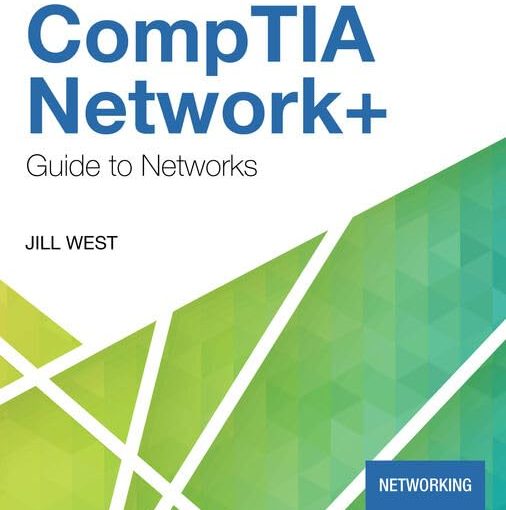If you’re preparing for the CompTIA Network+ certification or looking to strengthen your foundation in IT networking fundamentals, one book consistently rises above the rest: CompTIA Network+ Guide to Networks (MindTap Course List). As someone who has worked in systems administration and network engineering for years, I can say this book is far more than just another technical manual—it’s a roadmap to mastering the core principles that every IT professional needs. In this review, I’ll share my personal take on its content, structure, and real-world value so you can decide if it’s the right Network+ study guide for you.
First Impressions and Why This Book Stands Out
The first thing I noticed about this book is its balance between accessibility and depth. Many certification books either oversimplify concepts or overwhelm readers with theory. CompTIA Network+ Guide to Networks strikes the right middle ground. Whether you’re brand new to networking or you’ve already racked up years of IT help desk experience, the explanations are approachable, well-structured, and practical.
What really sets it apart is that it doesn’t just “teach to the test.” While it aligns directly with the CompTIA Network+ certification objectives, it also provides context that translates seamlessly to real-world IT environments.
Content Structure: A Guided Path to Networking Mastery
The book is divided into well-organized chapters that progressively build your knowledge base. Here are some of the key areas it covers:
- Networking Fundamentals: The early chapters establish the building blocks—network models, protocols, topologies, and the OSI model. The way the OSI and TCP/IP layers are explained here made it easier for me to map them to troubleshooting tasks in my daily work.
- Ethernet and Cabling: Detailed diagrams and cabling standards are included, which is invaluable for anyone who has ever had to trace a bad patch panel or terminate Cat6 correctly.
- TCP/IP and Routing: The book breaks down IP addressing, subnetting, and routing protocols with clarity. I found the examples and practice exercises especially helpful in reinforcing these concepts.
- Wireless Networking: Covers Wi-Fi standards, security, and troubleshooting tips, which have become essential in modern IT environments.
- Security Fundamentals: A strong focus on authentication, encryption, and threat management ensures you’re not only thinking about connectivity but also protecting the network.
- Virtualization and Cloud Networking: A newer addition that reflects the direction of IT infrastructure, making this book future-ready.
How It Aligns with CompTIA Network+ Certification Objectives
If your main goal is to earn the Network+ certification, this book is structured to directly support those objectives. Every domain in the official exam outline—from Networking Concepts and Infrastructure to Network Operations, Security, and Troubleshooting—is represented with in-depth explanations, examples, and practice questions.
What I appreciated most was how the review questions at the end of each chapter mimic the phrasing and style of the actual exam. This helps reduce the “shock factor” when you sit for the real thing. Even better, the book’s practical labs make sure you’re not just memorizing but also applying your knowledge.
Personal Insights: From the Server Room to the Exam Room
When I was preparing for my own Network+ certification, I relied heavily on this guide. One scenario that sticks out is when I was troubleshooting an intermittent connection issue at a branch office. The structured approach to OSI model troubleshooting that I learned from this book helped me isolate the problem to a faulty switch port within minutes. That kind of direct application proves this isn’t just exam prep—it’s career prep.
The cabling diagrams also came in handy more times than I can count. Whether setting up a new rack or validating contractors’ work, the standards drilled into me through the book gave me the confidence to check details others might miss.
Strengths and Weaknesses
No review would be complete without balance. Here’s where the book excels and where it could improve:
- Strengths:
- Clear explanations without oversimplification
- Strong alignment with exam objectives
- Hands-on labs and review questions
- Coverage of modern topics like virtualization and cloud networking
- Weaknesses:
- Some chapters can feel dense if you’re a total beginner
- The book is quite large—expect a serious time investment
Who Should Read This Book?
This book is ideal for:
- Aspiring network engineers preparing for their first certification
- Help desk technicians aiming to move up into networking roles
- IT students who need a reliable and structured Network+ study guide
- Working professionals refreshing their knowledge or validating their skills
If you fit into any of these categories, I highly recommend adding this book to your library. Grab your copy here and start building a stronger networking foundation today.
Final Verdict
CompTIA Network+ Guide to Networks (MindTap Course List) is more than just the best book for Network+ certification—it’s a comprehensive toolkit for anyone serious about IT networking fundamentals. It gives you the theory, the practical application, and the confidence to not only pass the certification but also excel in the workplace.
📘 Click to Buy the CompTIA Network+ Guide to Networks on Amazon
Whether you’re troubleshooting VLANs, setting up wireless access points, or securing a small office network, the knowledge gained from this guide will serve you throughout your career. If you’re serious about your future in networking, don’t wait—order your copy on Amazon now.
